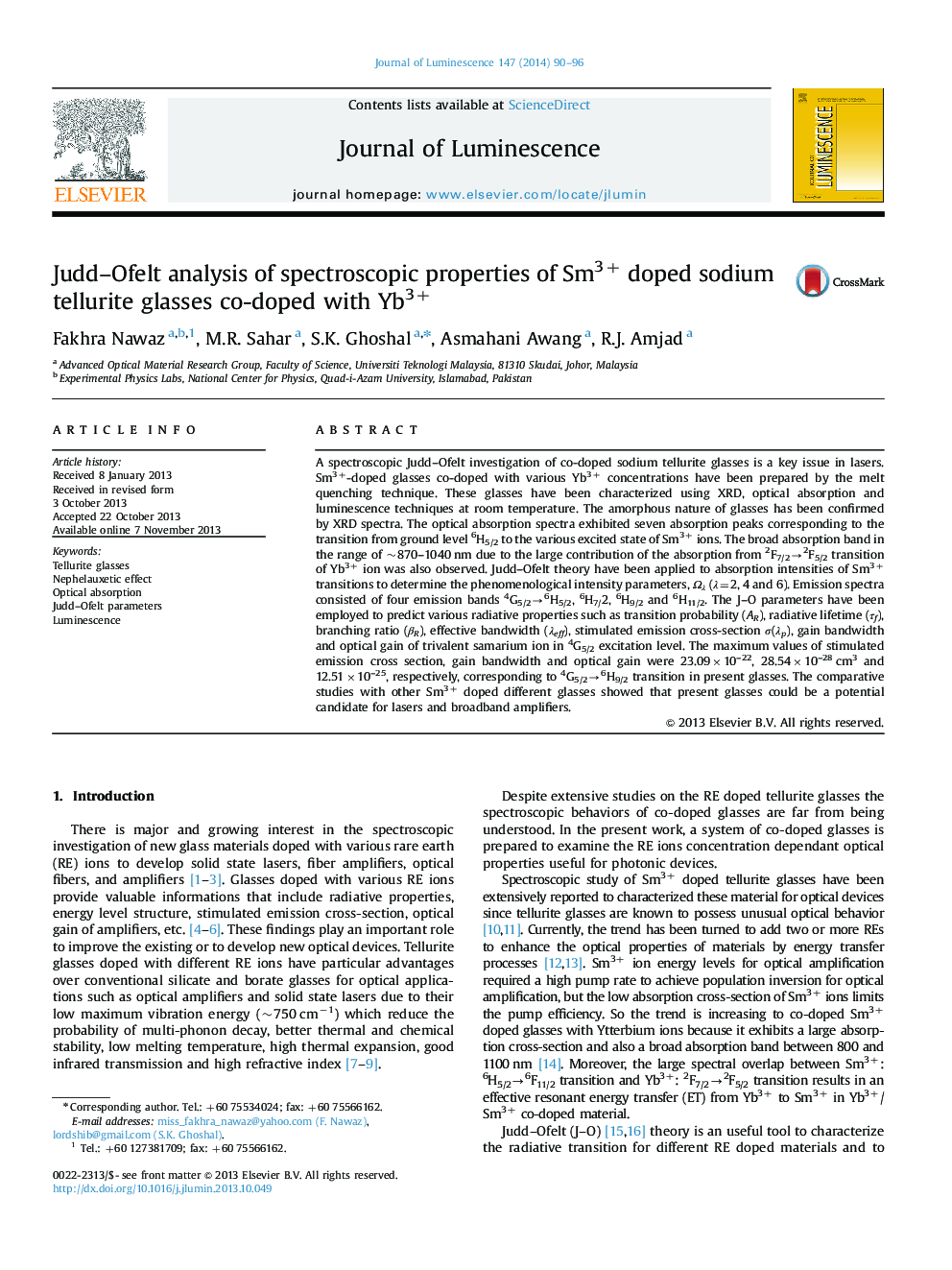| Article ID | Journal | Published Year | Pages | File Type |
|---|---|---|---|---|
| 5400030 | Journal of Luminescence | 2014 | 7 Pages |
Abstract
A spectroscopic Judd-Ofelt investigation of co-doped sodium tellurite glasses is a key issue in lasers. Sm3+-doped glasses co-doped with various Yb3+ concentrations have been prepared by the melt quenching technique. These glasses have been characterized using XRD, optical absorption and luminescence techniques at room temperature. The amorphous nature of glasses has been confirmed by XRD spectra. The optical absorption spectra exhibited seven absorption peaks corresponding to the transition from ground level 6H5/2 to the various excited state of Sm3+ ions. The broad absorption band in the range of ~870-1040 nm due to the large contribution of the absorption from 2F7/2â2F5/2 transition of Yb3+ ion was also observed. Judd-Ofelt theory have been applied to absorption intensities of Sm3+ transitions to determine the phenomenological intensity parameters, Ωλ (λ=2, 4 and 6). Emission spectra consisted of four emission bands 4G5/2â6H5/2, 6H7/2, 6H9/2 and 6H11/2. The J-O parameters have been employed to predict various radiative properties such as transition probability (AR), radiative lifetime (Ïf), branching ratio (βR), effective bandwidth (λeff), stimulated emission cross-section Ï(λp), gain bandwidth and optical gain of trivalent samarium ion in 4G5/2 excitation level. The maximum values of stimulated emission cross section, gain bandwidth and optical gain were 23.09Ã10-22, 28.54Ã10-28 cm3 and 12.51Ã10-25, respectively, corresponding to 4G5/2â6H9/2 transition in present glasses. The comparative studies with other Sm3+ doped different glasses showed that present glasses could be a potential candidate for lasers and broadband amplifiers.
Related Topics
Physical Sciences and Engineering
Chemistry
Physical and Theoretical Chemistry
Authors
Fakhra Nawaz, M.R. Sahar, S.K. Ghoshal, Asmahani Awang, R.J. Amjad,
